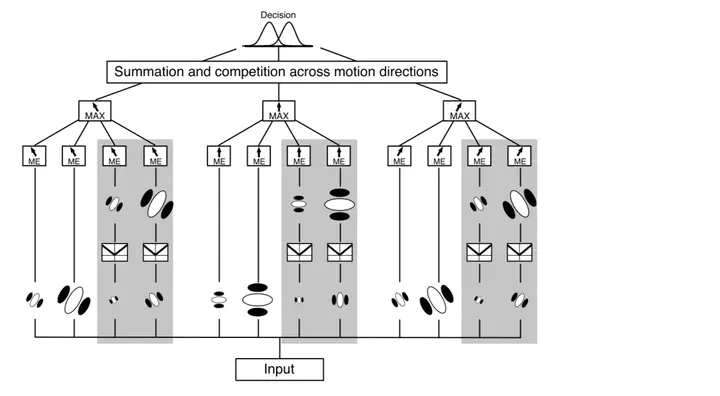
Abstract
Perceptual learning was used as a tool for studying motion perception. The pattern of transfer of learning of luminance- (LM) and contrast-modulated (CM) motion is diagnostic of how their respective processing pathways are integrated. Twenty observers practiced fine direction discrimination with either additive (LM) or multiplicative (CM) mixtures of a dynamic noise carrier and a radially isotropic texture modulator. The temporal frequency was 10 Hz, speed was 10 deg/s, and duration was 400 ms, with feedback. Group 1 pre-tested CM for 2 blocks, trained LM for 16 blocks, and post-tested CM for 6 blocks during 6 sessions on separate days. In Group 2, the LM and CM roles were reversed. The d’ improved almost twofold in both groups. There seemed to be full transfer from CM to LM but no significant transfer from LM to CM. The pattern of post-switch improvement was asymmetric as well-no further learning during the LM post-test versus rapid relearning during the CM post-test. These strong asymmetries suggest a dual-pathway architecture with Fourier channels sensitive only to LM signals and non-Fourier channels sensitive to both LM and CM. We hypothesize that the channels tuned for the same motion direction but different carriers are integrated using a MAX operation.